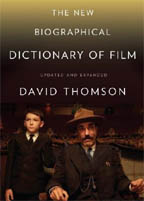 Book Reviews: May 2011

"A Who's Who in the Manson Family" by Adam Gorightly and Shamus McFarland is one easy-to-navigate reference book containing all the members/associates of the Manson "Family". (The book is also available on Amazon Kindle, and there is also a companion soundtrack.) It contains names, alias and up to date info - and of course, which ones are now "born again" Christians! So now you don't have to wait for the newest edition of Bugliosi's "Helter Skelter" just to read its "where are they now" updates. This "who's who" was originally included in the 2001 edition of Adam Gorightly’s,"The Shadow Over Santa Susana: Black Magic, Mind Control, and the Manson Family Mythos" - albeit in a much smaller form. The book is also full of trivia that only a true fanatic of the Manson case would appreciate. For instance, who were the two girls that Dennis Wilson picked up hitch-hiking? (Which lead to his association with the "Family") Who was the lockpicker that helped Manson and Co. break into the mansion belonging to Iron Butterly? Which "Family" member has toured with Hank Williams Jr. after his release from prison? Which ones of Angela Lansbury's kids hung out with Charlie? Which "Family" members went with Charlie back to the scene of the Tate murders to plant false clues (and even move the body of Sharon Tate)? Who was the first to mention that the Tate/LaBianca murders were an LSD drug hit? The book also points out a common error - Barbara Hoyt and Barbara Rosenberg are two separate people (Bugliosi's "Helter Skelter" has them as one in the same).
The only thing that would possibly make this book better would be if it were expanded - to all the major players in the Manson saga (Including lawyers, victims, etc. For instance, did you know that the bailiff Rusty Burell on Judge Wapner 's "Peoples Court" was a bailiff for the Manson trial?). Although small in size (117 pages), "A Who's Who in the Manson Family" is essential for any serious study of Charles Manson.
Noted film critic, Hollywood historian, and Dartmouth College professor David Thomson has produced another masterwork. Now in its fifth edition, this classic reference guide remains provocative, assertive, erudite, perceptive, and compulsively readable. Consider, for example, the opening paragraphs for four of his entries. Thomson on Harrison Ford: “Is there an actor in the history of movies whose films have grossed more money? Harrison Ford has starred in three Indiana Jones pictures; he played Han Solo three times; he was part of American Graffiti; and a lead in such clear-cut hits as Witness, Working Girl, and The Fugitive. He has been a staple of the last twenty-five years, on film and video, an unquestioned hero to millions of kids all over the world. On the other hand, I have never had the feeling that Ford has won—or much wants to win—the love of the masses. There is a distance about him, a restrained, chilling patience that seems wary of going beyond his own known limits. On the few occasions of adventurousness in Ford’s career, he has revealed himself as a limited, anxious actor. If The Mosquito Coast (86, Peter Weir) and Regarding Henry (91, Mike Nichols) have been his greatest tests, then Ford has hardly dared compete. In Mosquito Coast, he never approached the insane fascist charm of the character; while as Henry, he settled for a woefully shallow pathos.” Thomson on Katharine Hepburn: “Survival alone might have enshrined Hepburn as one of cinema’s greatest actresses, or characters. Add to that twelve Academy Award nominations and four Oscars, three of them when she was past sixty. She is so remarkable, she may have given the misleading impression that Hollywood is interested in old people. There was also the sentimental appeal of her long friendship offscreen (and the affectionate bantering on it) with Spencer Tracy.” Thomson on Elvis Presley: “There is a tradition of singers who made a string of movies because of their proven following. But is there a greater contrast between energy and routine than that between Elvis Presley the phenomenon, live and on record, and Presley the automaton on film? His movies still play on television. But Presley now is in a kind of retreat, and I can believe that in another ten years the movies will be reclaimed with camp glee for their specious, monotonous ‘youthfulness’—so wholesome, so bouncy, and so riotously clean when set against what we know of the real Presley. There are exceptions: he gives a genuine performance in Flaming Star (60, Don Siegel); the Clifford Odets script for Wild in the Country (61, Philip Dunne) works well, and Tuesday Weld and John Ireland get under the flaccid dude’s skin; there are numbers with Ann-Margret in Viva Las Vegas (64, George Sidney)—notably ‘What’d I Say?’—that expose the soporific air of most Presley films.” Thomson on Lee Van Cleef: “All it takes is a look. He said nothing in High Noon (52, Fred Zinnemann), but he was remembered as one of the gunmen at the rail depot waiting for the noon train, and he seemed nasty. He had small, glaring eyes and a face that might have been cut out of raw wood with a hatchet. Later on, it proved a face that could sweat and seethe under the Mediterranean sun of spaghetti Westerns, but long before that it had been a face that casting directors would pick out of a crowd.”
You get the picture. Brilliant stuff. In short, requisite reading for cinema enthusiasts.
 |
 "A Who’s Who of the Manson Family"
"A Who’s Who of the Manson Family"
 "The New Biographical Dictionary of Film" (Updated and Expanded)
"The New Biographical Dictionary of Film" (Updated and Expanded)